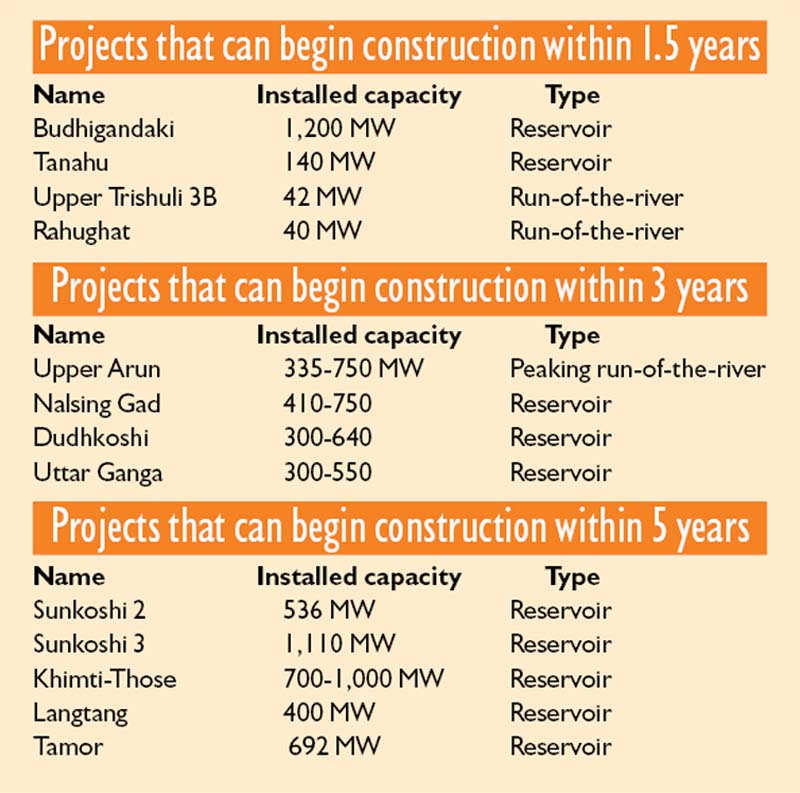Govt urged to prioritise hydro projects
Kathmandu, December 22
The country could start construction of 13 hydro projects with installed capacity of at least 6,205 megawatts in the next five years if the government works swiftly, the Parliamentary Committee on Agriculture and Water Resources said today.
Of these projects, a huge chunk is reservoir-type, with electricity generation capacity of at least 5,788 MW. Another two projects, with installed capacity of 82 MW, are run-of-the-river and one can be built under peaking run-of-the-river model.
The government and the private sector have long been saying that the country needs more of reservoir-type hydroelectric projects, as they can hold water during rainy season and use it during winter to generate electricity when rivers run out of water. Only this, they say, can solve the problem of power cuts in the country over the years.
During today’s parliamentary committee meeting, Gagan Thapa, chairman of Agriculture and Water Resources Committee, said at least 50 per cent of the upcoming hydro projects should be reservoir-type, another 20 per cent should be peaking run-of-the-river and 30 per cent should be run-of-the-river.
Nepal currently generates around 762 MW of hydroelectricity. But during winter, power generation capacity dips by more than half because most of the hydro projects in operation are run-of-the-river.
Run-of-the-river hydro projects generate electricity whenever there is water in the river. So, as soon as water level dips, electricity production from these projects falls.
To end this problem, the government should begin construction of four hydro projects within the next one to one-and-a-half years, the parliamentary committee said. These projects are 1200MW Budhigandaki, 140MW Tanahu, 42MW Upper Trishuli 3B and 40MW Rahughat. Of these projects — whose detailed feasibility studies have already been conducted — only Upper Trishuli 3B and Rahughat are run-of-the-river. The rest are storage-type projects.
The parliamentary committee has also proposed that the government complete detailed feasibility study of four additional projects within two years and begin their construction within a year of completion of the study. These projects are: 335-750MW Upper Arun, 410-750MW Nalsing Gad, 300-640MW Dudhkoshi and 300-550MW Uttar Ganga projects. All of these projects, except Upper Arun, which is peaking run-of the river, are reservoir-type.
The parliamentary committee has also recommended that the government complete detailed feasibility study of five additional projects within three years and begin their construction within two years of completion of the study.
These projects are: 536MW Sunkoshi 2, 1,110MW Sunkoshi 3, 700-1,000MW Khimti-Those, 400MW Langtang and 692MW Tamor. All of these projects are reservoir-type.
Although rivers in Nepal are said to have adequate capacity to generate 42,000 MW of electricity, the country has not been able to build big hydro projects since the mid-1990s. As a result, power cuts here currently stand at over 10 hours per day.
One of the reasons for delay in construction of big hydro projects is lengthy process of getting various approvals.
“Currently, a hydro project developer has to make rounds of seven ministries and 23 government departments, and deal with 36 different laws prior to beginning construction of hydro projects,” Thapa said.






